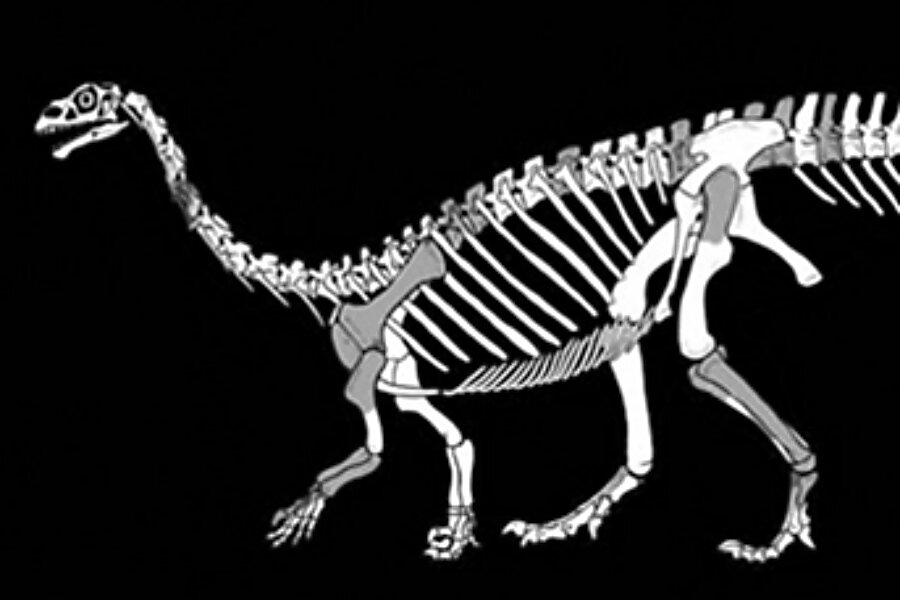New Jurassic dinosaur found hiding in fossil collection
Loading...
Sometimes it’s tough to keep a large collection of bones organized.
That is what scientists in South Africa realized when a new species of long-necked dinosaur was discovered right under their noses, amid the largest fossil collection in South Africa, at University of the Witwatersrand, Johannesburg.
The South African and Argentinian paleontologists, who discovered the ‘new’ 200 million-year-old dinosaur from South Africa, named it Sefapanosaurus, from the Sesotho word ‘sefapano,’ which means ‘cross’.
The naming is significant because it is what allowed the scientists to differentiate the bones in the first place. A cross of bones at the ankle had not been seen before in the other fossils of the other herbivorous, long-necked, small-headed species that Dr. Alejandro Otero and his team had been researching.
The fossils had originally been collected in 1930. According to a report released by the scientists, a few years ago, the Sefapanosaurus fossil was studied and thought to be part of the remains of another South African dinosaur called Aardonyx. But the cross bones at the ankle, noticed by Dr. Otero and a student on a research trip from Argentina, resulted in the unveiling of Sefapanosaurus, a medium-sized long-necked, small-headed herbivorous dinosaur that the researchers say walked on two legs.
Anusuya Chinsamy-Turan, a co-author in the study, said in the statement that “the discovery of Sefapanosaurus shows that there were several of these transitional early sauropodomorph dinosaurs roaming around southern Africa about 200 million years ago.”
This is significant because it gives scientists a better sense of the diversity during a period of evolutionary change when South America and Africa were still fused together in a single landmass called Gondwana. That landmass helps explain why researchers from Argentina and South Africa team up on paleontological projects: they are examining fossils, now separated by an ocean, that were once living side by side.
Argentinian co-author, Dr Diego Pol, said Sefapanosaurus and other recent dinosaur discoveries in the two countries reveal that the diversity of herbivorous dinosaurs in Africa and South America was remarkably high back in the Jurassic period. Those were the dinosaurs that gave rise to the enormous long-necked dinosaurs, so popular in the modern imagination, of the Mesazoic period.
“Sefapanosaurus constitutes a member of the growing list of transitional sauropodomorph dinosaurs from Argentina and South Africa that are increasingly telling us about how they diversified.” Dr. Jonah Choiniere, a co-author in the study and a senior researcher at Wits University, said in the statement. “This new animal shines a spotlight on southern Africa and shows us just how much more we have to learn about the ecosystems of the past, even here in our own ‘backyard’. And it also gives us hope that this is the start of many such collaborative palaeo-research projects between South Africa and Argentina that could yield more such remarkable discoveries.”





